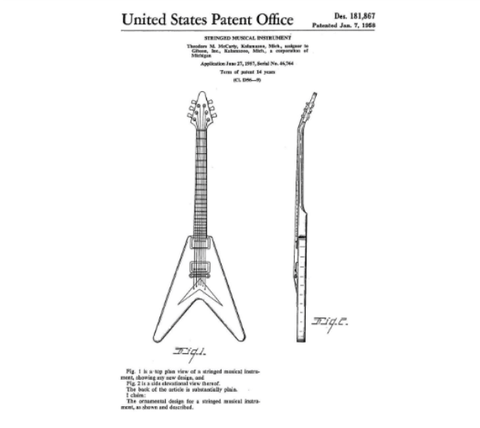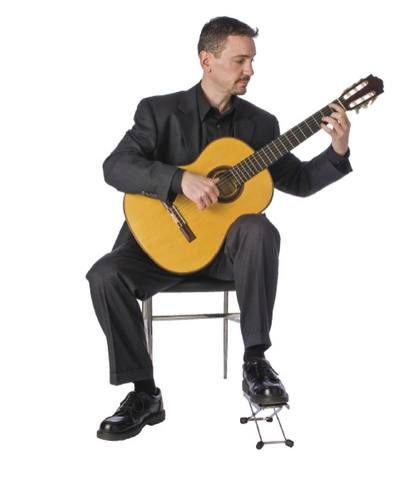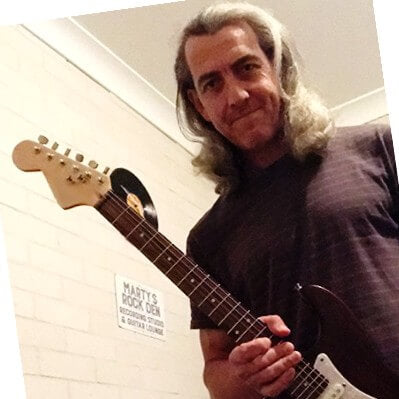Flying V® style Guitar Kit Review
The Flying V® is one of the more distinctive guitar shapes to ever grace a stage. With its iconic V-shaped body, combined with the arrow-shaped headstock, it’s a guitar shape that strongly divides opinion, yet remains popular with modern guitarists.
In the following article, we’re going to explore the history of the Flying V®, discuss some advantages and disadvantages you may not be aware of (there is one pretty major one in particular), list some of the more famous guitarists to have played the Flying V® and introduce you to the range of ‘V’ style guitar kits on offer at guitarkitworld.com.
View all available V-style guitar kits: V-shaped body DIY guitar kits
So if you have been interested in the ‘Flying V’ body shape, and wanted to know a little more before potentially owning one yourself, stay tuned, this article is for you.
The History of the Flying V®: The Modernist Series
The Gibson Flying V® and Explorer® share a very similar backstory, thanks largely to the success of Fender in the late 50s.
 While, in part due to the popularity of the Les Paul® released in 1952, Gibson had established itself as a major player in the electric guitar market during the early 50s.
While, in part due to the popularity of the Les Paul® released in 1952, Gibson had established itself as a major player in the electric guitar market during the early 50s.
By the late 50s however things had started to change and Fender was dominating market share, thanks largely to the success of the Stratocaster® and its modern stylings.
All things considered, the Strat® (with its range of vibrant color options and carefully considered contours that provided greater comfort for guitarists) had begun to make the Les Paul® appear a little dated.
While nowadays guitarists appreciate the vintage appeal of the Les Paul, just 6 short years after its release, the Les Paul® was beginning to look like a tired design in comparison to the more modern Stratocaster®.
To counter Fender’s dominance, Gibson, in 1958, launched the modernist series, consisting of the Gibson Moderne®, the Gibson Explorer® and of course the Gibson Flying V®.
Interestingly, Gibson applied for a patent covering the design of all three guitars in 1957. At the time it was far more common to apply patents for the engineering aspect of the instrument only, but perhaps Ted McCarty (president of Gibson at the time) had a hunch about the popularity of the designs.
In any case, the patent failed to stop several 'copy cat' guitars and as recently as 2016 Gibson lost a trademark case in the EU (GIBSON LOSES FLYING V TRADEMARK CASE IN EU COURT) and is currently pursuing legal action to protect its trademark in the US.
The Good, the Bad and the Ugly
In a practical sense, the Flying V® had one sizable advantage over competing models, upper fret access. Thanks to the absence of horns at the front of the guitar, and dual humbuckers capable of higher gain than the Strat® the Flying V was well suited to lead guitar, hence guitarists such as Randy Rhoads (Ozzy Osbourne) played them almost exclusively.
However, the Flying V also has a couple of distinct disadvantages that anyone considering buying one should certainly be aware of.
Firstly, the shape of the guitar is very difficult to play in a seated position, due to the rear-facing horns it is best played in a classical guitar position with the guitar sitting on the left leg for right-handed guitarists.

This may be one of the reasons Randy Rhoads was not deterred by the shape of the Flying V®, as he was a classically trained guitarist.
Aside from the difficulty of playing seated, the unusual shape of the Flying V® also has other practical limitations, especially with regard to sitting the guitar on a stand or acquiring a hard case.
Who Played on V-shaped Guitars
Despite the polarizing design and pros and cons with regard to comfort, the V-style guitar has been copied by number of manufacturers, including ESP, Jackson and Dean and has been played by any number of established artists, including:
- Randy Rhoads - Ozzy Osbourne, Quiet Riot
- James Hetfield and Kirk Hammett - Metallica
- Michael Schenker - UFO
- Billy Gibbons - ZZ Top
- Jimi Hendrix
- Tom Petty
- Albert King
- Lenny Kravitz
- Dave Mustaine - Megadeth
- Zakk Wylde - Ozzy Osbourne
- KK Downing - Judas Priest
- Marc Bolan - T Rex
Summary: V-shaped DIY Guitar Kits
Love them or hate them, the V-shaped has certainly stood the test of time, and due to their ongoing popularity, this iconic body shape is still being made by a number of manufacturers to this day.
If you have ever toyed around with the idea of building your own V-shaped guitar check out our V-style DIY guitar kits.
V-shaped guitar kits will afford you to customize your order based on a number of options including bolt-on or set neck, choice of body, neck and fretboard timbers, inlay options and more.

